#Animal Feed Companies
Explore tagged Tumblr posts
Text
Exploring Innovations Revolutionizing the Animal Feed Industry

Introduction
The global animal feed market was valued at over USD 460 billion in 2021 and is projected to exceed USD 650 billion by 2028, registering a compound annual growth rate CAGR of 4% during the forecast period. The Animal Feed Market is experiencing dynamic changes driven by evolving consumer preferences, technological advancements, and sustainability initiatives. This in-depth analysis delves into the latest innovations shaping the animal feed industry, providing insights into key trends, opportunities, and challenges for stakeholders.
Innovations Driving the Animal Feed Market:
Alternative Protein Sources:
With the escalating demand for sustainable and plant-based diets, alternative protein sources for animal feed formulations are gaining momentum.
Innovations in insect protein production, algae cultivation, single-cell proteins, and microbial biomass offer sustainable alternatives to conventional protein sources like soybean meal and fishmeal.
These alternative protein sources not only promote environmental sustainability but also provide essential nutrients for animals while reducing reliance on scarce resources.
Precision Nutrition:
Advancements in precision nutrition technologies are reshaping feed formulation and delivery, enabling customized diets tailored to individual animals' specific nutritional requirements.
Technologies such as near-infrared spectroscopy (NIRS), metabolomics, and predictive modeling enable real-time monitoring of animal health, performance, and nutrient utilization, leading to more efficient feed management practices.
The precision nutrition segment is anticipated to witness substantial growth, driven by increasing investments in digital technologies and data analytics, with the market expected to surpass USD 3 billion by 2028.
Alternative protein sources are expected to capture a significant market share, with insect protein alone projected to reach USD 1.5 billion by 2028.
Functional Feed Additives:
Functional feed additives, including probiotics, prebiotics, enzymes, organic acids, and botanical extracts, are gaining prominence for their potential to enhance animal health, immunity, and performance.
These additives support gut health, improve nutrient absorption, and mitigate the adverse effects of stress, pathogens, and environmental challenges on animal welfare.
Innovations in encapsulation and delivery technologies are enhancing the stability and efficacy of functional additives, ensuring their effectiveness throughout the animal's digestive tract.
Blockchain and Traceability:
Blockchain technology is increasingly being harnessed to enhance transparency, traceability, and accountability in the animal feed supply chain.
Through blockchain-based platforms, stakeholders can track feed ingredient journeys from farm to fork, ensuring compliance with quality standards, safety regulations, and sustainability criteria.
Blockchain facilitates seamless data sharing and verification across the supply chain, mitigating the risks of fraud, contamination, and mislabeling, thereby safeguarding animal and human health while bolstering consumer trust.
Challenges and Opportunities
Regulatory Hurdles:
Despite the potential benefits of innovative feed technologies, regulatory hurdles and approval processes can impede their adoption and commercialization.
Stakeholders must navigate complex regulatory landscapes and demonstrate the safety, efficacy, and sustainability of novel feed ingredients and additives to gain regulatory approval and market acceptance.
Cost Considerations:
The adoption of innovative feed technologies may involve higher initial costs and necessitate investment in research and development.
Stakeholders must carefully evaluate the cost-benefit ratio of implementing new technologies, considering factors such as feed efficiency improvements, animal performance gains, and long-term sustainability benefits.
Conclusion
Innovation is driving profound changes in the Animal Feed Market, offering transformative solutions to meet the evolving needs of livestock producers, consumers, and the environment. By embracing cutting-edge technologies and addressing regulatory challenges, stakeholders can unlock new opportunities for sustainable and profitable animal nutrition solutions while ensuring the health, welfare, and productivity of animals.
#Animal Feed Suppliers#Animal Feed Companies#Animal Feed Additives Market#Animal Feed Market Share#Animal Feed Market#Animal Feed Industry#Animal Feed Market Size#Compound Feed Market#Global Animal Feed Market#Global Animal Feed Market Size#Animal Feed Composition Market#Animal Feed Industry Trends#Animal Feed Market Growth#Animal Feed Market Challenges#Animal Feed Market Type#Animal Feed Market Research Reports#Animal Feed Industry Research Reports#Animal Feed Supplements Market#Animal Feed Suppliers Market
0 notes
Note
So anyway you repeatedly say we only feel corn husks and similar inedible parts to cattle but Never add a source to back it up. Having worked on farms I’m afraid for the most part the feeds I’ve seen have been parts entirely edible to humans. And like fuck man 5% of all grown soy is fed to humans or however the stat goes, do you really think the remaining 95% is inedible? really?
Anyway yeah I’m asking for a source here cause I don’t want to add this on to months old post
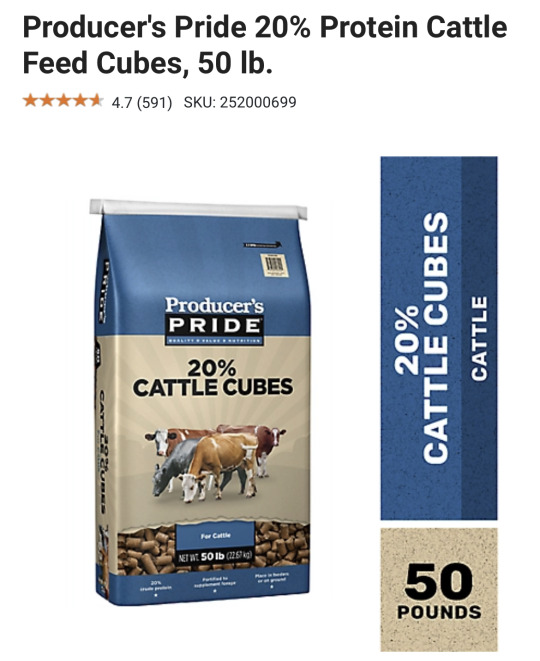
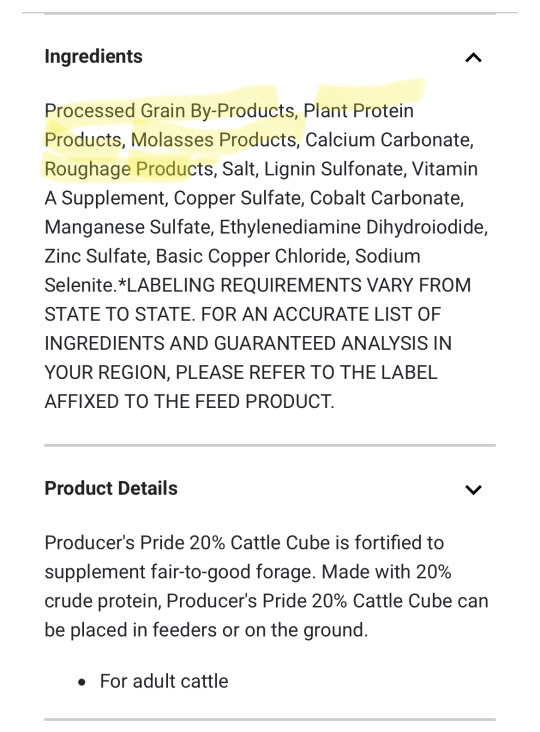
Ingredients such as “grain by-products” are referring to the husks, stalks, and other “green” parts of the plant that we humans don’t actually have the digestive capabilities to eat. The breakdown of most livestock feeds looks like the above when you actually take a look at it.
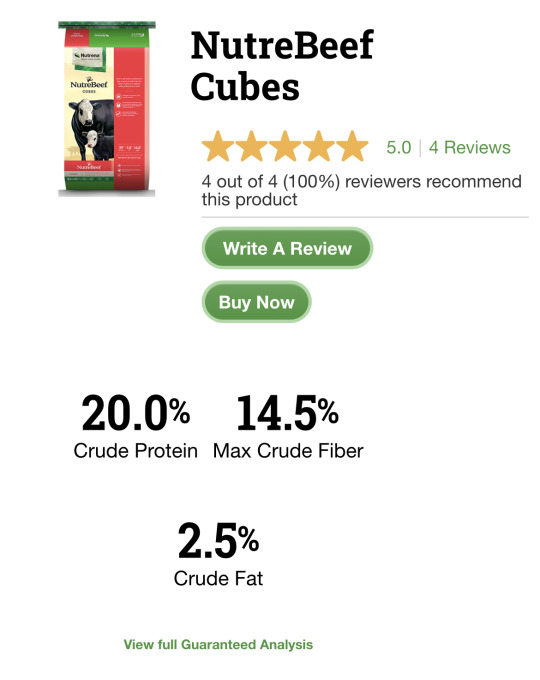

Different cattle feed, similar ingredients. Still primarily things that, and I have to stress this, you cannot eat. This one is slightly higher in quality and does indeed have actual grain products included. Some of those are edible to humans. Some are not. Generally cattle are fed cattle cubes with supplemental mineral licks and hay. Some also supplement with whole corn, but I can gladly assure you that corn is not in short supply and even if all the corn sold to animal feed was donated to the poor, you can’t actually live off of corn because there’s very little nutrition in it. Hence why in both human and animal food it’s typically seen as a filler ingredient. Keeps the mouth busy with a meal without making your stomach feel full and you end up eating more without feeling satisfied.
Soybeans are really only often used in feed for pigs because they’re a great source of protein for these animals. I would state that soy is also a terrible option to use as an emergency food for humans in need because while, yes, it is indeed a healthy bean, it’s also one of the top eight foods that humans are frequently allergic or intolerant towards. I’d also ask you for whether your 5% of all grown soy statistic is referring to the beans or the entire plant because yeah the beans are the edible part. The rest of the plant isn't especially healthy for humans to eat. I would say the beans are around 5% of a mature soy plant sure.
#No offense anon but when you come here with ACTUALLY MOST OF WHAT FARM COWS EAT IS HUMAN FOOD and bring up SOY in the discussion of COWS#I somewhat doubt you actually have much experience farming#because no actually cattle benefit from the green parts of the plant more than the bean parts in most cases#corn is used as a cheap supplemental feed because it’s cheap and it’s cheap because there’s so so SO much of it#And corn isn’t grown in special livestock only plantations when it’s used as feed as opposed to human food either#corn is grown en masse and processed and then sold to various companies which use the corn for various things#if animal feed companies stopped buying corn and that corn was instead bought by human food companies#that doesn’t mean corn would be any more or less accessible to the hungry#because it would go to grocery stores and TV dinner companies and sauce companies and soda companies and so on#and it would still be sold same as always#world hungerTM isn’t caused because people can’t afford corn#corn is dirt cheap and most people can afford it#it’s just barely a step above eating sand and you can’t live off of it#I’ve gone a few days only eating corn products because they were cheap#and shocking no one I had no energy and felt just as hungry after each bowl as I had before the last#people cannot survive off of that#giving corn to livestock isn’t taking away any resource of value from humans#sorry it just isn’t
333 notes
·
View notes
Text
Augh no one cares because we're chatting about Dreamnap on Shadoune's gay French event, but I'm thinking about the god of the wild au
The vulnerability of all the rituals that the humans in the dsmp make for Dream. He's am animal born God, he doesn't naturally have rituals or offerings, or even clothes! But they make them for him
Tommy and Wilbur spend months studying all sorts of Gods, tearing their practices apart and making them Dream's. Everyone finds their own way to honor Dream and feed him devotion in a way that they didn't need to. None of this is natural to him, none of this is needed. But they still do it. They still write prayers and make up dances and make hand made plates to hold fruit and milk and honey.
When Dream shows up dressed in embroidery and gold that's Tommy pulling him aside to dress him in the clothes he made. It's all handmade, it's all trust, it's all domestication and care and so much love. It's all human instinct.
#the dog barks#god of the wild#for all that Dream makes them animals they make Dream human#or well. idk. they dont make Dream human but they love him like humans#and he loves them back by bowing his head and letting them dress him letting them feed him#if anyone is wondering why Wilbur and Tommy are so... uh... religious I guess? why they study it so much#you know when you're spiraling really hard and you grab into anything to keep your attention off it?#yeah#no time for depression when you can figure out how to convert this summoning ritual for an animal god#or make an entire new robe set#plus they could feel Dream in limbo#wherever they were was not the traditional place where humans or animals go when they die#it was so warm. hot. like fresh blood#it pulsed under their hands like a beating heart#Wilbur had just that for company for so long. when he comes back the world seems to cold and quiet in comparison#being in a rabbit burrow could fix Revivebur#(also. uh. Phil was a little pushy about Kristen's worship when they lived with him)#(its at least a little spite and rebellion)#...what do I tag this#dsmp au#dreblr#the footnotes
21 notes
·
View notes
Text
Mostly yelling into the void here, but:
We (as in, the world population) are eventually gonna have to be okay with either GMO crops or food riots.
I’m not saying they’ll happen this year or anything like that. But our trends of rising income (increasing meat/non-staple grain consumption) and decreasing farmlands (climate change, soil exhaustion) are going to conflict sooner or later. We fundamentally need to crank out 50+% more food on less farmland under worse climate conditions.
And while I’d love to say we can do with traditional breeding methods, we can’t. It takes half a decade or more to breed one trait - like resistance to a novel disease, for instance - into one crop. We can do that in a year with a GMO organism - and then we can also make that crop use less fertilizer, grow faster, and be more heat tolerant within that same year. It’d be insane to toss that sort of advantage aside at any point, much less during a time when crops are simply not improving fast enough to keep up with demand.
There will come a point where people either eat GMOs or they don’t eat enough. There’s no way around it.
(Safety sidenote here: if you’re in the US and you eat meat from non-specialty stores, it’s a virtual certainty the animal you’re eating was fed GMO crops. We know they’re not harmful to eat. Our refusal to consume them is bizarre.)
(Food security sidenote here: I understand frustrations about commercialized industrialized farming, and I understand that GMO crops are not going to make that situation better. On the other hand, the median human being in an industrialized developed nation currently spends a tiny fraction of their time trying to acquire the calories required for survival and can still easily do so. This has never occurred before in human civilization.) (No, seriously, it hasn’t. (see Smil, Energy and Civilization, 2017: ‘No traditional agriculture could consistently produce enough food to eliminate malnutrition. All of them were vulnerable to major famines’.) You can argue that developed nations stumble on the distribution aspect, sure - and I’ll agree with you; while the US doesn’t really get famines, much less major ones, the fact that ~10% of the country faces malnutrition is a travesty - but that’s not the production side causing problems there. Modern commercial agriculture is a machine for turning energy into calories, and it’s dammed good at it. What’s next is getting our shit together enough to make it even better.)
#food#plants#farming#GMO#i guess???#also while I am yelling in the tags: the reason we don't make GMO crops is not because the companies are holding them back or some shit#it's because people don't buy them and so seed companies don't spend the money on them#seed companies make GMO animal feed out the ass because people who need to feed animals buy it
9 notes
·
View notes
Text
Why Animal Mineral Mixture is Important for Livestock Health
Good nutrition keeps animals healthy! Vetpolis provides animal mineral mixture to help cattle grow strong and stay active. Our cattle feed supplements give important minerals and vitamins for better digestion, strong bones, and more milk production. Healthy cattle mean better farming results. Give your animals the right care with high-quality feed. Choose Vetpolis for the best nutrition. Contact us today to keep your livestock healthy and productive!
0 notes
Text
Top Trends in the Animal Feed Industry: What Suppliers Need to Know
The animal feed industry is evolving rapidly, driven by technological advancements, sustainability concerns, and changing consumer demands. To stay competitive, animal feed suppliers in UAE and worldwide must adapt to emerging trends that shape the market. From innovative feed formulations to sustainable sourcing, understanding these trends is crucial for long-term success.
1. Sustainable and Eco-Friendly Feed Production
With rising environmental concerns, there is a growing demand for sustainable animal feed options. Suppliers are shifting towards eco-friendly ingredients, such as plant-based proteins and organic additives, to reduce the carbon footprint of livestock farming.
2. Advanced Nutritional Formulations
Precision nutrition is transforming the feed industry by optimizing nutrient composition based on the specific needs of different animal species. Suppliers are investing in research to develop customized feeds that enhance animal health, productivity, and digestion efficiency. Horse feed suppliers in Dubai are particularly focusing on balanced formulations to improve equine health and performance.
3. Use of Alternative Protein Sources
Traditional protein sources like soybean meal and fishmeal are becoming expensive and less sustainable. The industry is witnessing a shift towards alternative protein sources such as insect-based protein, algae, and single-cell proteins, which offer high nutritional value and lower environmental impact.
4. Digitalization and Smart Feed Management
Technology is revolutionizing feed production and distribution. From automated feed mills to data-driven livestock management, digital tools help suppliers monitor feed quality, manage supply chains efficiently, and predict market trends.
5. Demand for Organic and Non-GMO Feeds
Consumers are becoming more conscious about the quality of animal-derived products. This has led to increased demand for organic and non-GMO animal feeds. Horse feed suppliers in Dubai are particularly focusing on organic grain blends and herbal supplements to cater to horse owners looking for chemical-free nutrition.
Conclusion
The animal feed industry is undergoing significant changes, with sustainability, innovation, and digital transformation leading the way. Horse feed suppliers in Dubai must embrace these trends to remain competitive and meet the evolving demands of livestock and pet owners. By investing in research, sustainable sourcing, and technological advancements, suppliers can ensure a profitable and future-ready business.
0 notes
Text
.
#aesthetic cat feeding videos still be out there#feeding these cats raw poultry rn#as if avian influenza isn't rapidly spreading#as if multiple cats haven't died eating raw food and milk#feeding food from companies that 'batch test'#ignoring the fact that avian influenza is fatal to cats 🤡#I swear to god what are even animals to people#Wild coast Raw's food was batch test negative#well the test wasn't accurate enough bc their food was contaminated#and beloved cats died#like#stop doing this
0 notes
Text
Exploring Innovations in the Animal Feed Market Forecast 2028
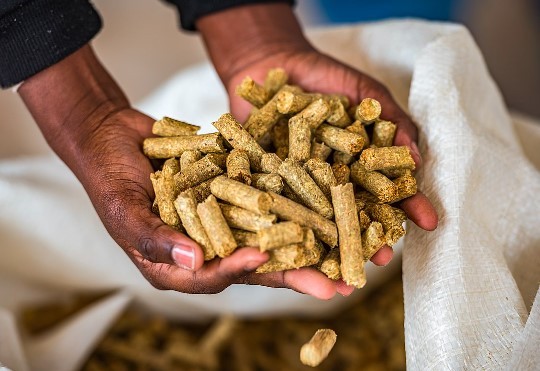
Market Size and Growth
The Animal Feed Market is witnessing robust growth globally, fueled by the increasing demand for high-quality animal protein, growing livestock populations, and rising consumer awareness about animal nutrition and welfare. According to recent market research reports, the global animal feed market was valued at over USD 460 billion in 2021 and is projected to exceed USD 650 billion by 2028, registering a compound annual growth rate CAGR of 4% during the forecast period.
Key Drivers of Market Growth
Rising Meat Consumption:
The growing global population, rising disposable incomes, and changing dietary preferences are driving an increase in meat consumption worldwide.
As a result, there is a corresponding rise in demand for animal feed to support the production of livestock, poultry, and aquaculture species.
Expansion of Livestock Production:
Developing economies, particularly in Asia-Pacific and Latin America, are witnessing rapid urbanization and industrialization, leading to the expansion of intensive livestock farming operations.
This trend is driving the need for efficient and nutritious animal feed formulations to support the health, growth, and productivity of livestock and poultry.
Technological Advancements:
Innovations in feed processing technologies, such as extrusion, pelleting, and micronization, are improving the digestibility, palatability, and nutritional value of animal feeds.
Advanced feed additives and supplements, including vitamins, minerals, amino acids, and growth promoters, are enhancing animal performance and health outcomes, driving market growth.
Regional Market Insights
Asia-Pacific:
Asia-Pacific dominates the global animal feed market, accounting for the largest share of both production and consumption.
Rapid urbanization, rising disposable incomes, and increasing meat consumption in countries like China, India, and Vietnam are driving market growth in the region.
North America:
North America is a mature market for animal feed, characterized by high levels of automation, stringent quality standards, and advanced feed formulation practices.
The region benefits from a well-developed livestock industry, strong regulatory frameworks, and a focus on sustainability and animal welfare.
Europe:
Europe is witnessing a shift towards sustainable and organic animal farming practices, driving demand for organic and natural feed ingredients.
Regulatory initiatives promoting antibiotic-free production, animal welfare standards, and environmental sustainability are shaping the European animal feed market landscape.
Conclusion
The Animal Feed Market is poised for significant growth in the coming years, driven by factors such as rising meat consumption, expanding livestock production, and technological advancements in feed formulation and processing. As the industry continues to evolve, stakeholders must stay abreast of emerging trends, regulatory developments, and consumer preferences to capitalize on growth opportunities and address challenges effectively. By embracing innovation, sustainability, and collaboration, the animal feed industry can play a crucial role in ensuring food security, nutrition, and environmental sustainability for future generations.
#Animal Feed Companies#Animal Feed Additives Market#Animal Feed Market Share#Animal Feed Market#Animal Feed Industry#Animal Feed Market Size#Compound Feed Market#Global Animal Feed Market#Global Animal Feed Market Size#Animal Feed Market Growth#Animal Feed Market Challenges#Animal Feed Market Research Reports#Animal Feed Industry Research Reports#Animal Feed Supplements Market#Animal Feed Suppliers Market#Animal Feed Market Size in India#Animal Feed Market in UAE#Importance of Animal Feed Market
0 notes
Text
have to keep reminding myself that I can’t quit my job bc it allows me to wfh and even tho it causes me immense stress, it’s still a 10x better work culture than most companies.
also, my job is probably one of the more secure ones if the economy goes to complete shit, and everything else I could reasonably be doing is…not lol.
#most of the stress is bc the company has grown#and our dept takes FOREVERRR to hire new ppl :/#and I get it you want to make good hires but we’re fucking dying here lol#I work in commercial insurance (surety bonds specifically)#i may have a heart attack by 35 but what u gonna do!!#got animals to feed and fam to look out for
1 note
·
View note
Text
The animal feed supplement companies in India are driving innovation and quality in livestock nutrition, ensuring better productivity and health outcomes. Brands like Vetnation Pharma, Vetraise Remedies, and Venky’s have established themselves as leaders in the field, catering to diverse livestock needs. By choosing the right feed supplements, farmers and livestock owners can enhance animal performance, reduce costs, and ensure sustainable farming practices.
#animal feed supplement companies in india#india's leading animal feed supplement companies#high quality animal feed supplement products#vetnation pharma
0 notes
Text
The Indian livestock industry plays a crucial role in agriculture and food production, making animal feed supplements an essential component of this sector. These supplements are vital for enhancing livestock health, improving productivity, and ensuring high-quality meat, milk, and egg production. With a growing demand for nutritious feed, several animal feed supplement companies in India have emerged as leaders in providing innovative and effective solutions.
#animalfeedsupplementcompaniesinindia#india'sleadinganimalfeedsupplementcompaniesinindia#vetnation pharma#high quality veterinary feed supplement#high quality meat#milk feed supplements#top 10 animal feed supplement companies in india#egg production#best animal feed supplements products
0 notes
Text
had an interaction with a cat at my mother's friend's house (we dropped by to feed her while my mom's friend was out of town) and my mother said "i was surprised how much that cat liked you, she doesn't usually let people pet her but she followed you around and let you pet her a lot"
and in explaining to her my interaction with the cat i put into words a thing i'd never put into words before, having always automatically understood what i was doing. But once i put it into words my mother said she'd never thought of that and it felt like something worth sharing here.
This cat did a typical cat thing where she sniffed my fingers i was holding out, and then acted like she wanted me to pet her, but then when i started to move to pet her, moved her head away slightly to prevent it.
I instinctively understand this interaction, and stopped trying to pet her and moved back to a neutral position and waited to see if she would re-initiate an interaction.
Because this is basically a consent test. This is how a cat can assess "how closely are you paying attention to what i'm telling you" and "how respectful of my boundaries are you".
If i am responsive to her yes/no game, moving to pet her when she indicates i can, stopping immediately when she seems to change her mind, then she knows she can trust me to understand her, and also to respect her choices. That's what i did, so then she knew she could trust me and relax around me and enjoy my company. She was actually a very friendly and social little cat, who clearly wanted to make friends with me.
But if i had insisted on trying to pet her when she seemed to change her mind instead of simply understanding that she didn't want to be pet in that moment, she would have known she couldn't trust me to understand or respect her, and she would have treated me like she has to treat 90% of the people who visit that house, evidently.
I work mostly with dogs these days, but i grew up with cats too, and am generally good with animals. Many shy animals will also do this same "sniff sniff okay touch me nope just kidding" routine, especially if they've had experiences with people that make establishing that kind of communication and trust important to them.
And in fact, a lot of animals will do some version of this kind of consent test in a whole variety of situations. When well socialized dogs do that thing where they are rough housing and then they both stop suddenly for a moment until one of them play bows or makes a little pouncing motion and then they fly back into rough housing mode, that's what they are doing, they are doing a consent check-in, like "whoah this is getting wild, are you still in? are we still playing, is this still a good time for you?"
anyway, that's why this lovely little cat followed me around asking me to pet her the whole time we were visiting that house, because i showed her that i understood her signals and respected her boundaries, which is something i see a lot of both men and women not doing when interacting with cats and dogs.
32K notes
·
View notes
Text




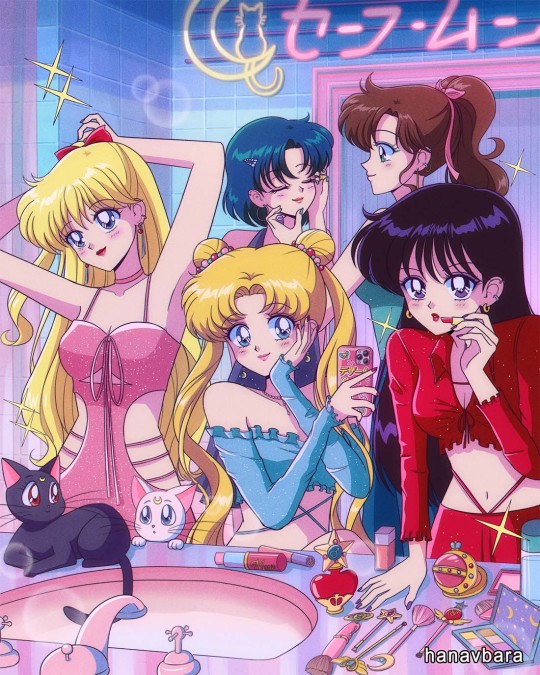


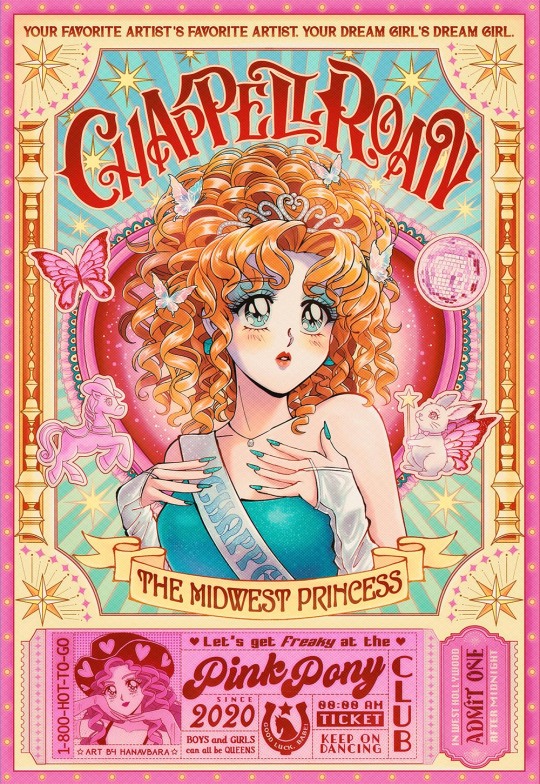
support HUMAN artists, not AI‼️
AI generated images are NOT art. art is CREATED, not GENERATED.
this is not just about taking jobs from artists (which is already a huge deal), it’s also about devaluing art itself, turning it into mass-produced, empty and soulless content. it’s heartbreaking to see AI stealing from real artists: from Studio Ghibli to smaller creators like us.
personally, we started our art journey by reinterpreting what we love: music, TV series, anime and transforming it into our vision inspired by the 90’s anime that we grew up with. when we create our illustrations, we try to capture the emotion and love we feel for the subject, aiming to tell a story with each drawing. ever since AI was created, we have had many people asking if our art is AI generated. honestly, it’s heartbreaking every single time. for us, art is a deeply human experience that we’ve been dedicating ourselves to for seven years. creating from nothing takes dedication, skill, and an emotional investment that, in our opinion, AI simply can’t capture.
you’ve probably seen your feed flooded with AI generated images in a “Studio Ghibli style”. trends like these reinforce the idea that art can be easily replicated and devalued. the future of artists is more uncertain than ever. we don’t know if in a few years we’ll still be able to make a living from this, since many companies are adopting the mindset of “why should i pay someone for their well-earned work when a machine can do it for free in an instant?” that mindset is the real problem: the way society is starting to perceive art.
art is essential to human life. many people realized this during the pandemic: what would we do without music, movies, books, that bring us comfort? art is more than just the final product. it’s about the process, struggles, and personal growth that comes with it. when you create, you grow, learn, and challenge yourself. AI erases that, replacing it with instant and shallow replication. real art brings people together, evoking emotions and reminding us of what it means to be human.
relying on AI to make art isn’t innovation, it’s avoiding the challenge of creating something meaningful. AI tools like these are being pushed as "the future," but what does that say about us? replacing human artistry with shallow, mass-produced content takes away humanity from art, do we really want to be part of a world where art is just another disposable product? what value do we place on creativity?
if you’ve made it this far, it means you care about these issues. let’s raise our voices together and speak up. don’t consume AI generated images. value and respect creativity. SUPPORT REAL HUMAN ARTISTS.
#artist#artists on tumblr#ai#anti ai#fuck ai#art#illustration#anime#digital art#artwork#creativity#chatgpt#studio ghibli#ghibli#artificial intelligence
8K notes
·
View notes
Text
Explore the growth drivers and key players in the probiotics in animal feed market, driven by factors like rising demand for animal-based protein, awareness of probiotic benefits, antibiotic-free meat production, pet food industry expansion, and aquaculture growth. Discover market insights from major players like ADM, Chr. Hansen, and DSM, shaping the global industry landscape.
#Probiotics in Animal Feed Market#Probiotics in Animal Feed#Probiotics in Animal Feed Market Size#Probiotics in Animal Feed Market Share#Probiotics in Animal Feed Market Growth#Probiotics in Animal Feed Market Trends#Probiotics in Animal Feed Market Forecast#Probiotics in Animal Feed Market Analysis#Probiotics in Animal Feed Market Report#Probiotics in Animal Feed Market Scope#Probiotics in Animal Feed Market Overview#Probiotics in Animal Feed Market Outlook#Probiotics in Animal Feed Market Drivers#Probiotics in Animal Feed Industry#Probiotics in Animal Feed Companies
0 notes
Text
The global probiotics in animal feed market is anticipated to grow from USD 4.6 billion in 2023 to USD 7.1 billion in 2028, at a compound annual growth rate (CAGR) of 9.1%.
#Probiotics in Animal Feed Market#Probiotics in Animal Feed#Probiotics in Animal Feed Market Size#Probiotics in Animal Feed Market Share#Probiotics in Animal Feed Market Growth#Probiotics in Animal Feed Market Trends#Probiotics in Animal Feed Market Forecast#Probiotics in Animal Feed Market Analysis#Probiotics in Animal Feed Market Report#Probiotics in Animal Feed Market Scope#Probiotics in Animal Feed Market Overview#Probiotics in Animal Feed Market Outlook#Probiotics in Animal Feed Market Drivers#Probiotics in Animal Feed Industry#Probiotics in Animal Feed Companies
0 notes
Text
Top Benefits of Using Animal Mineral Mixtures in Animal Nutrition
Vetpolis offers high-quality animal mineral mixture to ensure proper nutrition and health for livestock. These mixtures provide essential minerals that support digestion, boost immunity, and enhance overall growth. Combined with cattle feed supplements, they help improve milk production and animal strength. A balanced diet with the right minerals ensures better productivity and longevity for your animals. Trust Vetpolis for premium-quality supplements designed for optimal livestock health. Choose the best for your farm today! Visit our website to learn more.
#cattle feed supplements#animal mineral mixture#veterinary pcd franchise#veterinary pharma franchise company#veterinary pcd pharma franchise company
0 notes